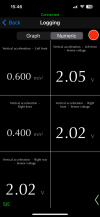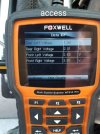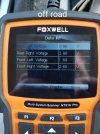jeremy156
Member
Going over my new-to-me L322 and examining suspension readings because I have an intermittently harsh ride.
I'm curious whether these values look typical? These are taken at standstill, engine off, so not sure why it's showing acceleration both sides. Presumably this is normal "zero-ish" tolerance and not a concern?
2011 L322 4.4 TDV8
I'm curious whether these values look typical? These are taken at standstill, engine off, so not sure why it's showing acceleration both sides. Presumably this is normal "zero-ish" tolerance and not a concern?
2011 L322 4.4 TDV8



